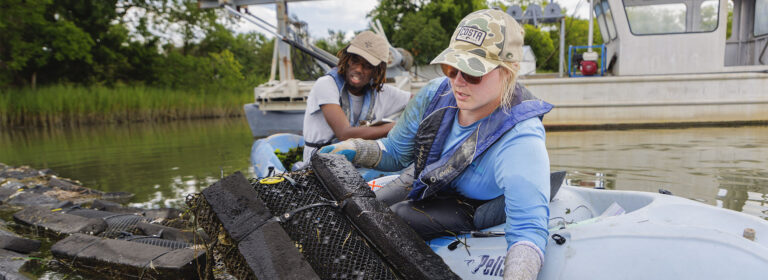Alaskan rockfish regrouping would better support management needs, research finds
There are about 33 species of rockfish in the Gulf of Alaska, and no two are exactly alike. Adult rockfish can be found living near craggy rocks, reefs, mudflats, and plant cover along the bottom of the Gulf. Some species are able to reproduce by the time they’re two and a half years old, but other species aren’t able to reproduce until they’re as old as 22.
Instead of monitoring and managing each rockfish species individually, researchers group some of them into complexes. The information for an individual rockfish species can be sparse, so monitoring these fish as a group allows researchers to piece together information and get a better idea of fish abundance.
For multiple species to be counted and managed as a complex, the fish must live in the same geographic areas, have similar susceptibility to fishing gear, and have similar life traits, like how long they take to grow and reproduce. These complexes are used when researchers conduct a fish “census,” or stock assessment, that looks at how many fish were caught and the estimated fish abundance.
“Some rockfish species bycatch is too small to manage by itself, and rockfish are part of many fisheries,” said Cindy Tribuzio, a research biologist with the Alaska Fisheries Science Center. “Grouping them together as a complex is more representative overall of what’s caught.”
Then, based on the scientific stock assessments and input from fishers, managers set the catch limits for the fish. But the information from the stock assessment — and the management recommendations — rely on well-grouped fish species within the complex. One such complex is a group of 27 species of rockfish in the Gulf of Alaska, known as the Other Rockfish complex.
In the Other Rockfish, complex a small subset of seven rockfish species, known as demersal shelf rockfish, prefer rocky areas at a shallower depth. The other 20 species in the complex live along the bottom in much deeper water. Kristen Omori, a National Marine Fisheries Service-Sea Grant fellow, focused on the accuracy of this rockfish grouping during her Ph.D. research at the Virginia Institute of Marine Science.
“This is where my interests and research became relevant in trying to determine whether or not the demersal shelf rockfish subgroup should be separated throughout the entire Gulf of Alaska,” Omori said. “My research ended up supporting that the demersal shelf rockfish should really be divided out into its own separate complex throughout the Gulf.”
“Some rockfish species bycatch is too small to manage by itself, and rockfish are part of many fisheries. Grouping them together as a complex is more representative overall of what’s caught,” Tribuzio said.
“My research ended up supporting that the demersal shelf rockfish should really be divided out into its own separate complex throughout the Gulf,” Omori said.
To determine whether this subset of demersal rockfish was different enough to require their own separate group, Omori analyzed the relationships among the rockfish the Gulf using multiple methods, including a species distribution model. These models helped Omori piece together the information from commercial catch rates, biological studies, and other surveys to compare their similarities and differences. One model allowed her to analyze how rockfish habitats shift from year to year, and analyze which rockfish species occupied similar areas in the Gulf.
“If they’re not even inhabiting a similar space, then they’re going to be caught by different fishing gears,” Omori said.
She found that the demersal shelf rockfish, which are mostly caught on longlines and hide in rocky areas, were substantially different from the other 20 species in the complex, which are caught primarily in trawl gear. Dividing them into a group of their own would make assessment and management for each group more accurate.
Management actions like bycatch limits, in turn, determine whether a fishing boat can keep enough fish for a profitable margin, said Anne Beaudreau, an associate professor at the University of Washington who conducted research interviews with some of the commercial fishermen who catch rockfish in Alaska. Once the quota for rockfish is met, it can also limit the catch for other, more lucrative fish.
“A certain percentage of rockfish are allowed to be kept as bycatch in some fisheries that are targeting other species,” Beaudreau said. “In some cases, it was worth landing certain species, but it depends on the bycatch allowance in that fishery and the price of rockfish.”
Since the Gulf of Alaska is so big, the Alaska Fisheries Science Center separates it into five management regions, with each region approximately twice the size of the Chesapeake Bay. In the region where demersal shelf rockfish are most common, these seven species of rockfish were already being managed separately. Based on Omori’s research, which she presented in September 2021, the regional council is considering whether to separate out the demersal shelf rockfish in the other four regions as well.
This wouldn’t be the first time the rockfish groupings have changed, said Tribuzio, who served as one of Omori’s NOAA mentors during her fellowship. The stock assessment for the Other Rockfish complex is conducted every two years, and Omori’s work was included in the last assessment.
“We’ve come a long way in fisheries management, and we have the ability to look a little more deeply at why fish are grouped the way they are,” Tribuzio said. “We have enough resources and research to change recommendations. Without Kristen’s work, we’d still be stuck in a question about those complexes.”
Takeaways:
- The 33 types of rockfish in the Gulf of Alaska are caught as bycatch in several different types of trawl gear. Instead of monitoring and managing each species individually, researchers group some of them into complexes.
- One of these groups, the Other Rockfish complex, consists of 27 species. Kristen Omori, a NMFS-Sea Grant Fellow, focused on the accuracy of this rockfish grouping during her Ph.D. research at VIMS.
- She found that the demersal shelf rockfish, which are mostly caught on longlines and hide in rocky areas, were different enough from the other 20 rockfish in the complex to merit their own complex.
Photo by Jay Clark | Virginia Sea Grant
Contributed photos from Kristen Omori and NOAA Fisheries
Story by Madeleine Jepsen | Virginia Sea Grant
Published May 6, 2022.
Since the Gulf of Alaska is so big, the Alaska Fisheries Science Center separates it into five management regions, with each region approximately twice the size of the Chesapeake Bay.





